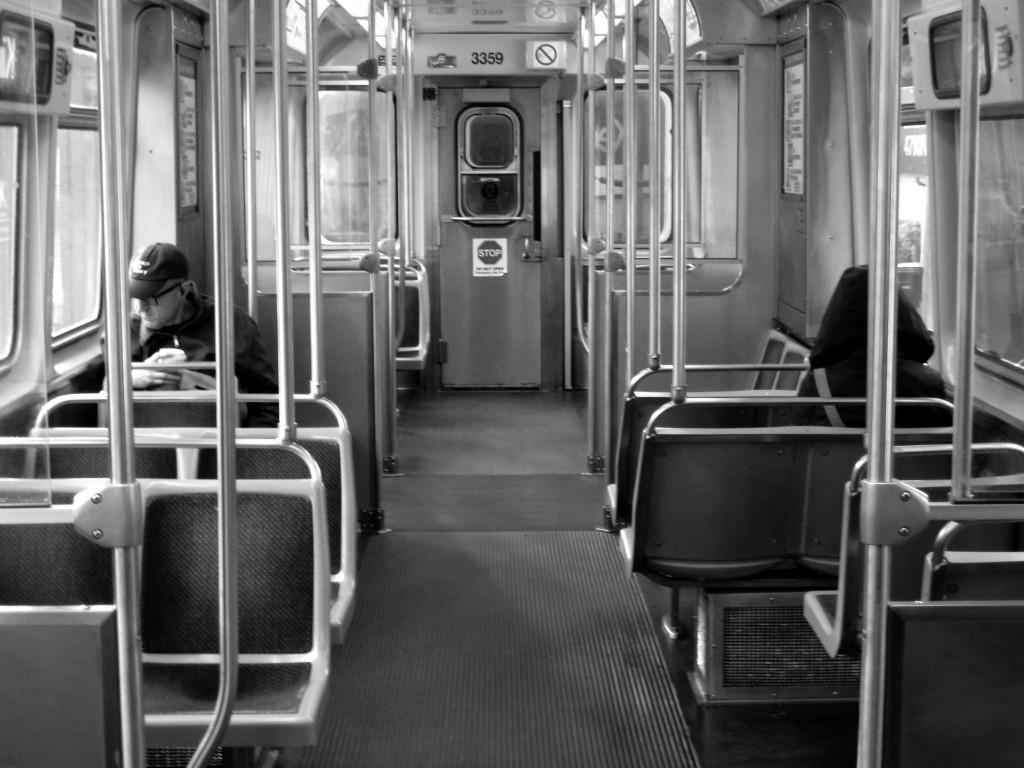Everyday, hundreds of thousands of people ride the Chicago Transit Authority (CTA). With so many passengers, it is hard for CTA to maintain total control over the safety of everyone. Though some riders have never encountered an incident where they felt unsafe, various forms of harassment have been known to occur.
Mary Presley, Div. 272, stepped on a Western bus after school around 3:30 p.m in mid-September; her usual route.
The bus was crowded with people standing close to each other. Presley felt something brush against her leg. She ignored it at first, thinking it could have been an accident but the touching persisted. Presley realized this was not an innocent mistake.
Presley turned around to see a short Hispanic man in his early 30s to late 40s dressed in a dirty tank top with his nipples exposed. Frightened, Presley moved closer to the bus driver for safety, but the man followed her.
Before exiting the bus at her stop, she had to step over the man’s purposely out-stretched leg and pass his sneering smile.
“I was so scared,” Presley said. “I just wanted to go home, but something told me to look up [at the bus]. I saw my friend on the bus waving to me, telling me to get back on.”
Presley turned around to see the man following close behind her. She scurried back on the bus to join her friend, finally leaving her harasser behind.
Talking with other girls on the bus, Presley realized the same man had been harassing more than just her. She was shocked no one had spoken up about it.
In May 2009, an informal survey was conducted by members of the Rogers Park Young Women’s Action Team (YWAT). Of the 639 passengers (male and female) surveyed, 52 percent reported having been sexually harassed while using the CTA. YWAT’s survey also reported that only nine percent of these sexual harassment victims filed a report.
YWAT’s research not only shows the frequency of sexual harassment on the CTA, but also the lack of action taken by witnesses. Of the 44 percent that had witnessed harassment, only 22 percent of them stepped in to protect the victim. One of the bigger mistakes in handling a sexual harassment situation, especially a first time encounter, is expecting somebody else to say something about it. Victims are largely left to stand up for themselves. The story of Gabriele Bieliauskaite, Div. 462, bears this out.
Around 7 a.m. on Thursday Sept. 29, Bieliauskaite boarded the Red Line train at Cermak and Chinatown for her usual morning route to school. On the train, she was approached by a heavy, middle-aged, black man with a goatee. He was wearing white sunglasses, a red plaid shirt, and blasting music on his phone. Feeling uncomfortable and intimidated, Bieliauskaite did not tell the man to step away from her. He stepped closer, leaning over her, holding his phone by her ear. With his face inches away from her, he stared intently.
“People looked at me, then at him, but didn’t say anything,” Bieliauskaite said. “I figured somebody would help me.”
Bieliauskaite switched train cars but the man followed and stood next to her once again.
Two young girls watching nearby saw the harassment and told Bieliauskaite to get off the train with them.
Unlike Presley, Bieliauskaite reported the harassment to CTA personnel who told her to press the emergency button next she felt harrassed.
According to YWAT, of the 78 percent who were victims of or witnessed sexual harassment cited the Red Line as the place where the incidents occurred. Though the Red Line is reported as the place of most frequent harassment incidents, it is not to be singled out. Harassment can occur on any CTA transit system.
Last year in May, Claire Ramos, Div. 472, was coming home from school on the Belmont bus at around 4 p.m. As she sat down, a short, Hispanic man with black spiked hair put his arm across the back of her seat. He kept moving his hand down until he was touching her arm. She caught his reflection in a mirror only to find him smiling at her.
“I was freaked [out]. I kept a calm exterior but inside I was like, ‘Oh my gosh, what is he doing!?’” Ramos said.
Shortly thereafter, Ramos got off the bus at her stop.
Cherrell Anderson, Div. 266, had a similar experience when coming home from school last spring on the Division bus near Clemente High School. As the bus came to a sudden halt, Anderson felt an arm around wrap around her waist. She looked up to see a bald, white man with reddish skin and wearing a white tank top holding her.
“He was a stereotypical dirty, old man,” she said. “He said he needed something to hold on to when the bus stopped. I thought, ‘Was I really the only option or just a free feel?’”
The man moved to the back of the bus and spoke to a few boys from Clemente. After Anderson heard the man tell the boys that Clemente girls are “hot,” she knew he had touched her on purpose. Anderson believes since she gets on the bus near Clemente, he thought she was one of their students.
“I felt scared. I should have said, ‘Don’t touch me!’” she said.
Not all cases of harassment leave the victim in a state of fear. Some people, like Sydney Sprandel, Div. 264, felt personally victimized but not scared.
Sprandel was sitting on a Lawrence bus in mid-September at 7 a.m. on her way to school. Though seats were open, a skinny, Mexican man in his 40s wearing a white tank top and red jacket sat down in the open seat next to her.
“He kept moving and moving and moving closer to me until we were literally one person,” Sprandel said. “I felt something moving on my leg. I lifted my bag off my lap and this man’s hand was rubbing my thigh.”
When the man noticed Sprandel looking he immediately put his hand in his pocket and looked away.
Sprandel called her friend and began to explain very loudly what just happened so the entire bus could hear. Though people on the bus gave her strange looks, their opinion was the last thing on her mind.
“I felt disgusted. I wasn’t scared, just really angry. It’s not my first encounter, just the first time someone had the nerve to touch me,” she said.
Many girls, like Sprandel have experienced harassment before, but never considered it to be a serious issue because it was not taken to a physical level. YWAT worked with CTA to create a campaign to inform the public that sexual harassment can be verbal, physical, or even just leering. All should be reported and taken seriously.
Whether it is minor harassment created through intimidation tactics, or more serious offenses of physical contact, sexual harassment should never be ignored. According to the YWAT’s anti-harassment ads on the CTA, “If it’s unwanted, it’s harassment.”
Tips to Protect Yourself Against Sexual Harassment (collected from the official CTA website and victims in this article)– Don’t doubt your instincts. If you feel uncomfortable because of someone too close to you, do not assume it is an accident. If it’s unwanted, it’s harassment. This includes touching, rude comments, or leering.
– Speak up. Don’t be afraid to tell
somebody to back off or to move if you feel uncomfortable.
– Switch train cars to one closest to the conductor. On a bus, move closer to the bus driver.
– Press the Emergency Button in train cars if needed.
– Report any harassment as soon as possible to CTA authority. If you sit back and wait for someone to help you, it could be too late.




